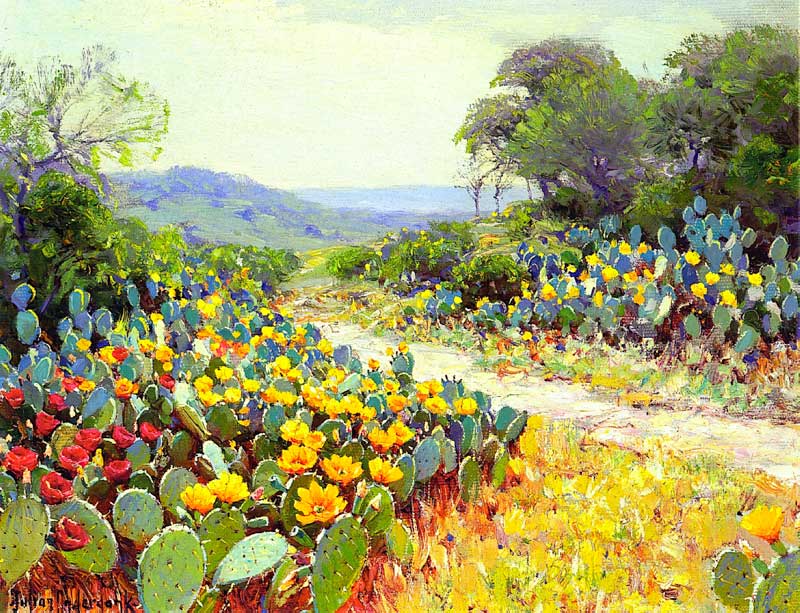
Born in San Antonio, Texas, to painter Robert Jenkins Onderdonk, Julian Onderdonk studied first under his father, then in the military academy and finally, in New York, under the master American painter William Merritt Chase. He left for New York in 1901 at the age of 19, returning to Texas after eight years, at age 27, with a wife and daughter.
He struggled in New York to make a name for himself and to support his family. It was only after his return to San Antonio that he began his rise to prominence, bringing with him a refined sensibility and deep appreciation for his home state.
He would become renowned for his sweeping impressions of the iconic Texas bluebonnet, but if these were all that he produced, he would have never earned the distinction the “Father of Texas Painting.”
Onderdonk’s landscapes depict much more—rugged mountains, cactus fields along winding rivers under wide open skies—and have appealed to people across the country and the world. His landscapes, depicting dawn, midday, twilight and dusk, suggest an insatiable love for his homeland. Until his death, he remained committed to capturing the impressions it never ceased to make on his soul.
His autumn and winter scenes, especially, present to the viewer a landscape that, while distinctly Texan, can be found elsewhere, too—along New Mexico’s Rio Grande, for instance, or the Platte River in Nebraska. The scenes’ regionality lends itself, somehow, to the universal sensibility that has impressed itself on the hearts, minds and hands of generations of painters all over the world.
—Prepared by the World Tribune staff
You are reading {{ meterCount }} of {{ meterMax }} free premium articles

